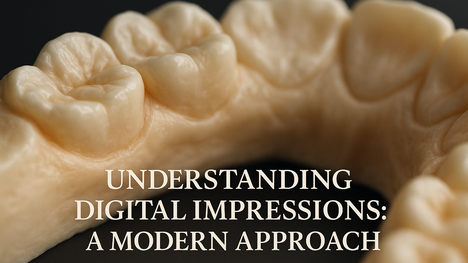
Understanding Digital Impressions: A Modern Approach
In the swiftly evolving landscape of dentistry, digital impressions have become indispensable. Dr. Ahmad Al-Hassiny outlines the evolution of intraoral scanners, emphasizing that despite advancements in technology, errors persist in the scanning process. This article aims to elucidate common pitfalls and their solutions, ultimately leading to improved patient outcomes and operational efficiency in dental practices.
Common Pitfalls in Digital Impressions
One of the most notable challenges encountered by dentists is achieving optimal adjacent contacts. Many dental professionals overlook the importance of ensuring that contacts are parallel and smooth, leading to the frequent occurrence of open or light contacts. This can result in costly remakes and extended waiting times for patients. Understanding how to adjust adjacent contacts prior to scanning can drastically reduce these issues.
Additionally, insufficient tissue retraction is a widespread problem. Many practitioners rely too heavily on past techniques, neglecting the need for effective tissue management during the scanning process. Adequate tissue retraction is vital for creating clear margins, as it minimizes the chances of poor marginal fits which can lead to decay.
Strategies for Improved Outcomes
To combat the issues associated with adjacent contacts, implementing a robust inspection and adjustment process is crucial. Before taking a final scan, dentists should ensure that adjacent contacts are adequately adjusted to prevent issues down the line. This simple yet effective practice could save countless hours and resources.
For tissue management, employing tools such as retraction cords or specialized packs is essential. These methods allow for effective tissue retraction, revealing the margins clearly for easier scanning. Beyond merely implementing these techniques, regularly evaluating the quality of the scans is equally important for consistent success.
Future Implications of Enhanced Scanning Techniques
As digital scanning technology continues to advance, it is imperative for dental practitioners to stay abreast of evolving techniques and tools. With enhanced scanners fostering better visualization and accuracy, the need for proper technique becomes even more pressing. Engaging in continued education and training will equip practitioners with the necessary skills to maneuver these updates fluidly.
Emphasizing Patient Trust Through Quality Care
In a landscape where patient trust is paramount, avoiding common pitfalls in intraoral scanning directly contributes to building stronger relationships with patients. When dentists ensure a higher quality of care through proficient scanning techniques, it fosters a sense of reliability and integrity within their practice.
Moreover, demonstrating commitment to the latest dental technology signals to patients that their oral health is in capable hands. In turn, this enhances patient loyalty and satisfaction, ultimately contributing to the growth of dental practices.
Conclusion: Inviting Practitioner Action
As we delve deeper into the world of digital dentistry, it becomes increasingly evident that the nuances of intraoral scanning bear significant implications for both dental professionals and patients. Recognizing and correcting the five critical mistakes can lead to a marked improvement in patient outcomes, operational efficiency, and overall satisfaction. It is incumbent upon dental practitioners to advocate for these changes in their practices, fostering better experiences for both themselves and their patients.
 Add Row
Add Row  Add
Add 




Write A Comment